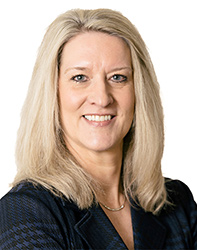A flexible, yet disciplined approach to navigating uncertainty and positioning for growth in a volatile business climate.
By Tammy Gamble, Partner and Chief Risk Officer at The Bonadio Group
Manufacturing and distribution (M&D) companies are navigating one of the most complex and unpredictable business climates in years—one where the ability to anticipate and adapt has become a competitive advantage.
Among the key pressures M&D companies face is persistent cost inflation, high borrowing costs and fluctuating consumer demand which are impacting margins and investment decisions. Supply chain volatility, though more stable than in recent years, remains vulnerable. While disruptions have eased since the pandemic, climate-related events, geopolitical tensions and logistics constraints continue to affect costs and delivery timelines.
Geopolitical instability and shifting trade policies add further complexity. Current tariffs enacted—such as the most recent in October 2025 on furniture and wood products—continue to challenge global operations and fuel economic uncertainty.
Meanwhile, environmental, social and governance (ESG) expectations are also evolving. Heightened sustainability demands from regulators, customers and investors are putting additional pressure on M&D organizations to meet expectations of measurable ESG performance and transparent reporting.
Lastly, no discussion of the modern M&D landscape would be complete without acknowledging rapid technological and workforce developments. Artificial intelligence (AI), robotics and the Internet of Things (IoT) are transforming production and logistics, while skilled labor shortages remain a persistent constraint.
In this environment of heightened uncertainty, traditional forecasting often falls short. Instead, scenario planning has become an essential tool for building resilience, managing risk and positioning for growth.

At its core, scenario planning is a structured “what-if” analysis. Unlike traditional forecasting—which relies on historical data, statistical models and trend analysis to predict the most likely future—scenario planning allows leaders to adjust key variables such as market demand, supply costs or labor availability to see how different circumstances might play out.
By testing future scenarios and their potential outcomes in a simulated environment (such as a spreadsheet or planning software), decision-makers can anticipate challenges and opportunities before they materialize.
Scenario planning offers a wide range of benefits for M&D companies that go beyond simple contingency preparation.
While scenario planning comes with clear strategic benefits as outlined above, it also comes with its own challenges. It is often time- and data-intensive, and teams may struggle to define key uncertainties or agree on the most critical drivers.
Scenario planning also tends to overemphasize downsides and can limit growth thinking by focusing only on worst-case scenarios. Additionally, scenario plans that are not integrated with budgeting or strategy processes may go unused. Finally, resistance to change may hinder adoption. Transitioning from fixed forecasts to flexible planning requires a cultural shift.
For companies new to scenario planning, or those more accustomed to traditional forecasting, the process may seem daunting. The following steps can help:
At a time when disruption is the norm rather than the exception, companies that rely solely on traditional forecasting risk being caught off guard by factors beyond their control. Scenario planning offers a disciplined yet flexible framework to anticipate those possibilities. More importantly, it cultivates adaptability and innovation, enabling teams to not only withstand disruption but also uncover new efficiencies and competitive advantages. By making scenario planning a regular part of strategic discussions, M&D leaders can transform uncertainty into opportunity and position their organizations for lasting success in an increasingly dynamic global market.

About the Author:
Tammy is a Partner in The Bonadio Group’s Assurance Service and has over 30 years of audit experience. She works closely with large- and middle-market clients in a variety of industries, including food and beverage, manufacturing and distribution, service providers, and technology and financial services. Tammy also works with portfolio companies of private equity groups and entities with multi-national operations. Tammy has experience with various accounting issues, including complex revenue recognition, derivatives, leases, complex equity arrangements, stock-based compensation, debt offerings, business mergers and acquisitions, goodwill impairment assessments, restructuring actions, restatements, and fraud matters. In addition to Tammy’s client service responsibilities, she is also The Bonadio Group’s Chief Risk Officer (CRO). This critical leadership role is dedicated to managing the firm’s risk function amongst the significant changes the industry is experiencing.
In this episode, I sat down with Beejan Giga, Director | Partner and Caleb Emerson, Senior Results Manager at Carpedia International. We discussed the insights behind their recent Industry Today article, “Thinking Three Moves Ahead” and together we explored how manufacturers can plan more strategically, align with their suppliers, and build the operational discipline needed to support intentional, sustainable growth. It was a conversation packed with practical perspectives on navigating a fast-changing industry landscape.